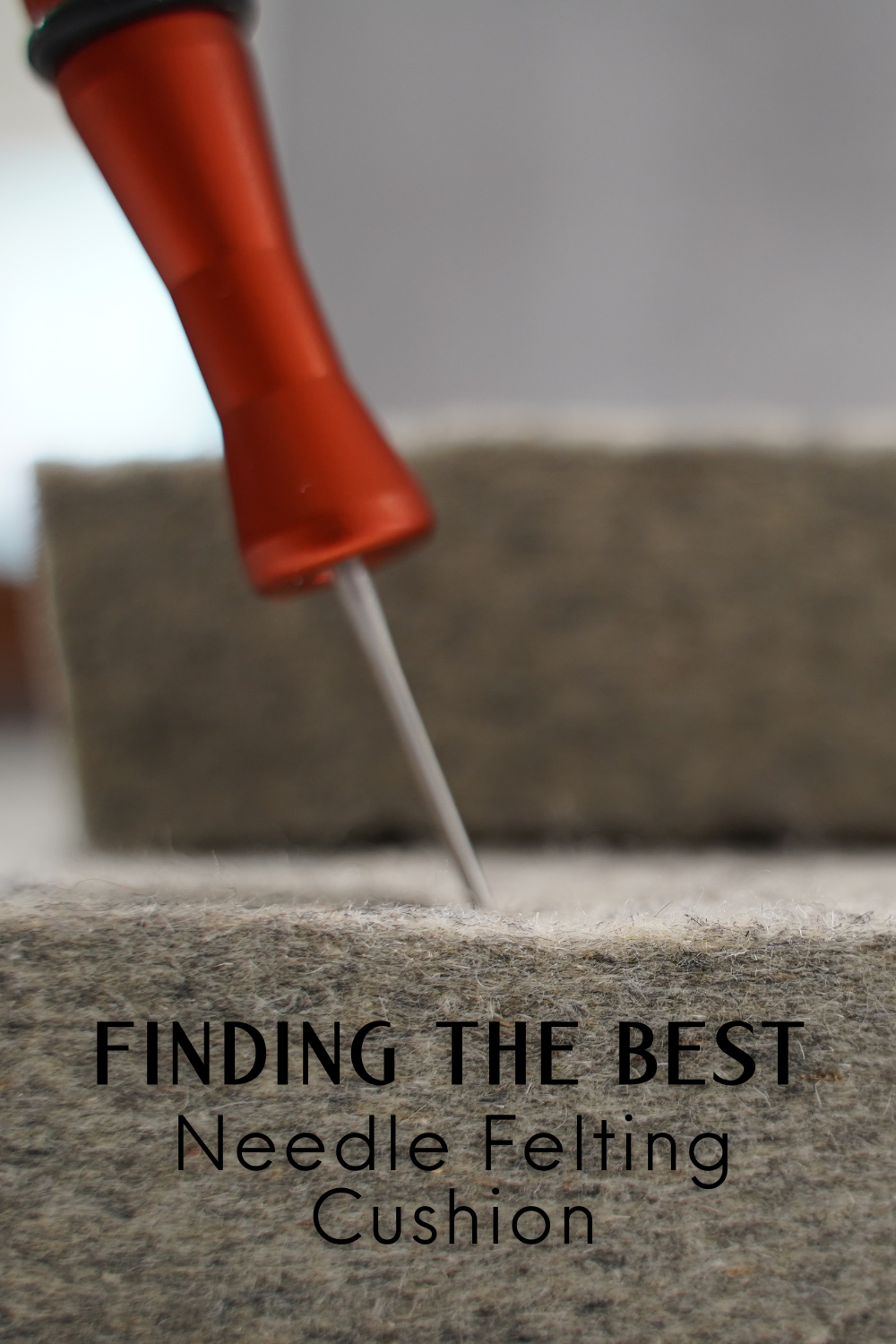
Finding the Best Needle Felting Cushion
If you’ve ever spent hours happily stabbing away at wool, you already know—your needle felting cushion is more than just a surface. It’s your foundation, your safety zone, and often the key to how enjoyable (or frustrating!) a felting session feels.
The right cushion helps your wool take shape smoothly, keeps your needles from breaking, and even saves your wrists during long felting marathons. But with so many options out there, how do you know which one is best for you?
Let’s take a look at what makes a great felting cushion—and which ones are worth investing in.
Why You Need a Cushion
A felting cushion gives your needles the right amount of resistance. Without one, you risk bending or breaking needles, or even damaging your work surface. A good cushion also keeps your project stable so you can felt evenly and with control.
If your cushion is too soft, you’ll push your needle too far in; if it’s too hard, your needle might snap. The perfect cushion offers that “just right” balance—firm but forgiving.
Common Types of Felting Cushions
Foam Cushions
Foam pads are where most people start. They’re inexpensive and easy to find, which makes them great for beginners. But they also wear out quickly. Over time, foam starts to crumble and cling to your wool fibers, leaving little bits of debris behind.
And for some, the squeaky sound of the needle going into foam can be… well, a little irritating. Once you’ve felted on something quieter and smoother, it’s hard to go back!
Pros: Affordable and accessible
Cons: Breaks down quickly, sheds debris, can squeak, not eco-friendly
Wool Felting Cushions
If you’ve never tried felting on wool, you’re in for a treat. A wool felting cushion gives the perfect amount of resistance without that squeaky sound. Your needles glide in smoothly, and because the cushion is made from the same material you’re felting with, it feels much more natural to work on.
When shopping for a wool cushion, here’s what to look for:
-
Density: The more densely felted the pad, the better. Dense wool cushions don’t shed fibers into your project, and your project’s wool won’t stick to the pad as easily.
-
Firmness: A firm pad helps prevent deep indentations where you tend to felt most. Some wool pads I’ve used in the past turned into little hills and valleys over time—but a dense, well-made cushion stays flat and consistent.
-
Shape: I personally prefer a flat cushion rather than a pillowed one. A flat pad lets you work right up to the edge or even hang your project slightly over the side while you felt. It gives you more control and keeps your work even.
My favorite pads are 100% wool, made right here in the USA. They aren’t made from my own flock’s wool—I save my precious Romney and CVM fibers for my sculptures and felting kits—but they’re the same high quality I choose for myself and my students.
Pros: Durable, quiet, eco-friendly, needle-friendly, and long-lasting
Cons: Slightly higher cost, but they’ll last you years instead of months
Brush Mats
Brush mats are another option you might see in stores. They have stiff plastic bristles and are designed more for surface or applique felting—great for adding wool designs onto fabric. But for 3D felting, they don’t provide enough resistance and can even catch your needles.
Pros: Good for flat or clothing projects
Cons: Not suited for sculptural felting
Rice-Filled Burlap Bags
Another option you might come across is a rice-filled burlap bag. These are literally small sacks of rice sewn into burlap or linen and used as a felting surface. They’re natural and inexpensive, and some felters appreciate that they can shape them slightly or refill them over time.
That said, they aren’t my favorite. Personally, I found them heavy, and the texture didn’t feel quite right for my style of sculptural felting. They can shift a bit while you work, and the uneven surface makes it tricky to achieve consistent shapes.
Still, they’re a creative idea—and if you prefer a more rustic, natural feel and don’t mind the extra weight, you might enjoy trying one.
Pros: All-natural, refillable, rustic aesthetic
Cons: Heavy, less stable, inconsistent surface feel
Choosing the Right Size
If you mostly make small animals, ornaments, or mini projects, a 6″ x 6″ pad works beautifully.
For larger sculptures or 2D pieces like landscapes or banners, I recommend an 8″ x 10″ cushion for extra workspace.
Many felters keep both on hand—one as their main pad, and a smaller one for travel or classes.
My Favorite Cushion
After years of felting nearly every day, I’ve found that nothing compares to a dense wool felting cushion. It’s quiet, durable, comfortable to work on, and completely natural. My pads are made in the USA from 100% wool—eco-friendly, biodegradable, and made to last.
They’re a simple, sustainable upgrade that can make a world of difference in how your projects turn out and how much you enjoy the process.
Final Thoughts
A great felting cushion won’t just make your projects look better—it’ll make felting feel better. Whether you’re just beginning or you’ve been sculpting wool for years, investing in a high-quality wool pad is one of the best things you can do for your craft.
Your hands, your needles, and your creations will thank you.





